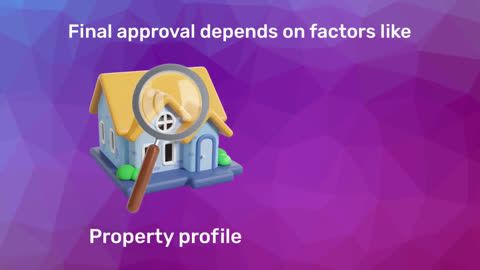Understanding the intricacies of monetary policy is crucial for anyone interested in finance or economics. Among the many tools available to central banks, the repo rate and reverse repo rate are two of the most significant. These rates play a pivotal role in controlling the money supply, inflation, and overall economic stability.
The repo rate is the interest rate at which commercial banks borrow funds from the central bank by selling their securities, while the reverse repo rate is the rate at which the central bank borrows money from commercial banks. These rates are adjusted by the central bank to regulate liquidity in the economy.
A higher repo rate makes borrowing costlier, reducing money supply and controlling inflation, whereas a lower repo rate encourages borrowing and spending, boosting economic growth. Conversely, the reverse repo rate helps absorb excess liquidity by offering banks a secure way to park their funds.
These rates significantly impact loan interest rates, particularly home loans, as banks adjust lending rates based on changes in the repo rate. Understanding these factors can help individuals make informed financial decisions.
What is the repo rate?
The repo rate, short for repurchase rate, is the rate at which the central bank of a country (such as the Reserve Bank of India) lends money to commercial banks. These loans are typically short-term, often overnight, and are secured by government securities. The central bank uses the repo rate as a tool to manage liquidity in the economy and control inflation.
- Control inflation: By increasing the repo rate, the central bank makes borrowing more expensive for commercial banks. This leads to higher interest rates for consumers and businesses, reducing spending and slowing down inflation.
- Encourage borrowing: Conversely, by lowering the repo rate, borrowing becomes cheaper, encouraging spending and investment, which can stimulate economic growth.
What is the Reverse Repo Rate?
The reverse repo rate is the interest rate at which the central bank borrows money from commercial banks. It acts as a tool to control excess liquidity in the economy and regulate inflation.
- Absorbing excess liquidity: When there is surplus money in the banking system, the central bank increases the reverse repo rate to encourage banks to deposit their excess funds, reducing money supply.
- Ensuring financial stability: By managing liquidity through the reverse repo rate, the central bank prevents excessive lending, which could lead to inflationary pressures or asset bubbles.
This rate plays a crucial role in shaping monetary policy and maintaining economic balance.
How Does Repo Rate Work?
The repo rate is the rate at which commercial banks borrow money from the central bank by pledging government securities. When the repo rate increases, borrowing becomes expensive, reducing the money supply and controlling inflation. Conversely, a lower repo rate makes borrowing cheaper, encouraging lending and economic growth.
Current Repo Rate in India
As of August 8, 2024, the current repo rate in India stands at 6.50%, as announced by the Reserve Bank of India (RBI). This rate directly impacts loan interest rates and overall economic liquidity.
Key differences between repo rate and reverse repo rate
Repo and reverse repo rates are crucial tools used by central banks to manage liquidity and control inflation, influencing the flow of money in the economy.
Key Aspect |
Repo Rate |
Reverse Repo Rate |
Purpose and Function |
Provides short-term loans to banks to inject liquidity and stimulate the economy. |
Absorbs excess liquidity from the banking system to control inflation and maintain stability. |
Impact on Liquidity |
Lower repo rate increases liquidity by making borrowing cheaper for banks. |
Higher reverse repo rate decreases liquidity by encouraging banks to deposit surplus funds with the central bank. |
Influence on Interest Rates |
Directly affects interest rates on loans provided by banks. A higher repo rate increases loan interest rates. |
Indirectly affects interest rates by influencing the amount of money banks can lend. |
Lender and Borrower |
The lender is the RBI, and the borrower is the commercial bank. |
The lender is the commercial banks, and the borrower is the Reserve Bank of India. |
Objective |
To manage a short deficiency of funds. |
To reduce the overall supply flow of money in the economy. |
Rate of Interest |
Higher than the reverse repo rate. |
Lower than the repo rate. |
Interest Charge Mechanism |
Applicable through a repurchase agreement. |
Applicable through a reverse repurchase agreement. |
Mechanism of Operation |
Commercial banks get funds from RBI using government bonds as collateral. |
Commercial banks deposit their excess funds with the RBI and earn interest on the deposit. |
Impact of Higher Rate |
Increases the cost of funds for commercial banks, making loans more expensive. |
Lowers the money supply in the economy as commercial banks park more funds with the RBI. |
Impact of Lower Rate |
Decreases the cost of funds for commercial banks, leading to lower interest rates on loans. |
Increases the money supply in the economy as banks lend more and reduce deposits with the RBI. |
Impact of repo rate and reverse repo rate on home loans
The repo rate and reverse repo rate significantly impact interest rates on various financial products, including home loans. When the repo rate is high, banks face higher borrowing costs from the central bank. Consequently, they increase interest rates on loans, including home loans, to maintain their profit margins. Conversely, when the repo rate is low, banks can afford to offer lower interest rates on home loans, making borrowing cheaper for consumers.
For instance, during periods of economic slowdown, central banks may lower the repo rate to stimulate growth. This reduction in the repo rate can lead to lower home loan interest rates, encouraging more people to invest in real estate. Therefore, understanding these rates can help potential homebuyers make informed decisions about the timing of their home loan applications.
Impact on other financial products
Apart from home loans, the repo rate and reverse repo rate also affect other financial products, such as:
- Personal loans: Similar to home loans, the interest rates on personal loans are influenced by changes in the repo rate. A lower repo rate can result in lower interest rates on personal loans, making borrowing more affordable.
- Fixed deposits: The interest rates on fixed deposits (FDs) are also impacted by the repo rate. A higher repo rate can lead to higher interest rates on FDs, making them a more attractive investment option.
- Savings accounts: The interest rates on savings accounts may also fluctuate based on changes in the repo rate, although the impact is generally less pronounced compared to loans and fixed deposits.
How central banks use repo and reverse repo rates
1. Controlling inflation
Central banks use the repo rate and reverse repo rate as tools to control inflation. By adjusting these rates, they can influence the amount of money in circulation. For instance:
- Raising the repo rate: To combat high inflation, the central bank can raise the repo rate, making borrowing more expensive. This reduces spending and helps to bring down inflation.
- Raising the reverse repo rate: Similarly, increasing the reverse repo rate encourages banks to park their excess funds with the central bank, reducing the money supply and helping to control inflation.
2. Stimulating economic growth
During periods of economic downturn, central banks may lower the repo rate to stimulate growth. By making borrowing cheaper, they encourage spending and investment, which can help to boost economic activity. Similarly, lowering the reverse repo rate discourages banks from depositing their surplus funds with the central bank, increasing the money available for lending and investment.
The role of repo and reverse repo rates in financial planning
1. For individuals
Understanding the repo rate and reverse repo rate can help individuals make informed decisions about their finances. For example:
- Home loans: Potential homebuyers can monitor changes in the repo rate to identify the best time to apply for a home loan. A lower repo rate can result in lower interest rates, reducing the overall cost of the loan.
- Investments: Investors can use information about the repo rate to make strategic decisions about their investments, such as choosing between fixed deposits and other investment options.
2. For businesses
Businesses can also benefit from understanding the repo rate and reverse repo rate. For instance:
- Borrowing costs: Companies can monitor changes in these rates to anticipate changes in borrowing costs and plan their financing strategies accordingly.
- Cash management: Businesses can optimize their cash management strategies by understanding how these rates impact liquidity in the banking system.
Conclusion
The repo rate and reverse repo rate are crucial tools in the arsenal of central banks, used to control liquidity, inflation, and economic stability. By understanding the key differences between these rates and their practical implications, individuals and businesses can make more informed financial decisions.
For homebuyers, keeping an eye on repo rate trends can provide valuable insights into the best times to apply for home loans. Similarly, other financial products, such as personal loans, fixed deposits, and savings accounts, are also influenced by these rates. By understanding the dynamics of repo and reverse repo rates, consumers and businesses can optimize their financial strategies to maximise benefits and minimise costs.




